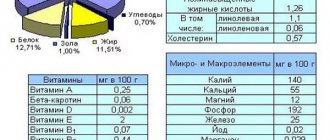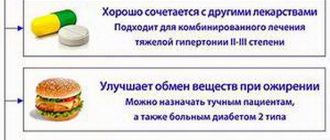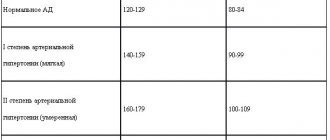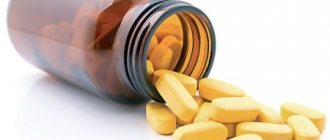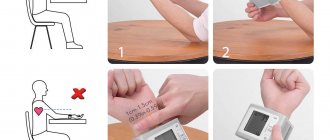Indirect impact of COVID-19 on ACS
During the first lockdown (March 2021) in the UK, patients with acute coronary syndrome (ACS, especially non-ST-segment elevation) were less likely to seek help. During the second lockdown, there was no such a pronounced decrease: one explanation is the British Heart Foundation’s to seek help immediately after the onset of chest pain.
Also in 2021, the number of hospital patients referred for routine care decreased. For the first time in a long time, there is a waiting list of patients waiting >1 year for heart surgery in the UK. This trend is not unique to cardiovascular diseases (CVD): many elective surgeries have been postponed due to restrictions due to coronavirus infection.
In some countries, a similar situation is observed: for example, in Italy, the number of patients admitted to hospital with ACS complicated by pulmonary edema has increased. At the same time, in the Scandinavian countries, the speed of providing emergency care to patients with ACS has increased (angiographic laboratories do not work with planned patients, and therefore emergency patients receive care faster).
Structure [edit]
ESC includes:
- 57 national cardiological societies
- 7 associations
- 15 working groups
- 7 tips on various areas of cardiology. Activities extend far beyond Europe, with almost 90,000 members coming from all over the world.
The ESC maintains close links with 57 national societies of cardiology and 47 affiliated societies of cardiology around the world. Since 2013 [3], additional infrastructure has been developed within the associations to meet the special interests and needs of women professionals [4] [5] and young doctors [6], such as Young Electrophysiologists. [7]
COVID-19 syndemic
Syndemia is a condition in which a negative interaction of biological and social components occurs:
- with COVID-19, the endothelium is affected: a particular example - CVD aggravates the course of COVID-19, and the coronavirus itself negatively affects CVD (during the conference, the opinion was voiced that COVID-19 is an “endothelial infection”)[1][2][3] ;
- low socioeconomic status of the patient is associated with severe course and death of COVID-19[4];
- In countries with high levels of environmental pollution, the worst course of COVID-19 has been noted[5].
Congresses and events[edit]
ESC Congress 2021, Paris
The ESC organizes several leading cardiology congresses each year, including the ESC Congress. Annual or biennial specialized congresses are devoted to acute cardiac care (Acute Cardiovascular Care Congress), cardiac imaging (EuroEcho-Imaging Congress), prevention and rehabilitation (EuroPrevent Congress), ESC preventive cardiology, nuclear cardiology and cardiac CT (ICNC Congress), magnetic resonance ( EuroCMR Congress), Interventional Cardiology (EuroPCR Congress), Heart Failure (Heart Failure Congress), Heart Rhythm and Electrophysiology (EHRA Congress), and Basic Sciences (Frontiers in Cardio Vascular Biology Congress).
Thrombosis and thromboembolism in COVID-19
COVID-19 is associated with a high risk of venous thrombosis and arterial atherosclerosis.
The D-dimer indicator is used to detect bleeding disorders and monitor the condition of patients. The question of the need for antiplatelet agents is controversial: research is underway (in particular, on the possibility and effectiveness of acetylsalicylic acid). The plaques that form in the blood vessels of patients with COVID-19 are different from those caused by standard coronary artery disease (CHD), autopsy data show. This means that antiplatelet drugs may be ineffective.
As a preventative measure for thrombosis and thromboembolism, it is recommended to prescribe heparin to all patients (especially those at risk for blood coagulation disorders)[6].
MICHELLE trial presented at the congress showed that
Treatment with rivaraxaban 10 mg for 35 days after discharge in patients with COIVD-19 reduces the risk of thrombosis and pulmonary embolism compared with placebo.
History[edit]
ESC was founded in 1950,
and its headquarters are located in the beautiful Sophia Antipolis technology park in the south of France, between Nice and Cannes.
The first European Congress of Cardiology was held in London in September 1950.
Latest statistics show that the association represents a total of 80,000 cardiology professionals from Europe and the Mediterranean.
In addition to its headquarters in Sophia Antipolis, the ESC opened the European Heart Agency in Brussels in February 2013
, located close to the European Parliament complex, since it is very important for the future of the ESC to build a base in the political capital of Europe.
Flu, COVID-19, vaccination and cardiovascular risks
The influenza pandemic (2009, USA) caused an increase in mortality from CVD, hospitalizations due to decompensated chronic heart failure (CHF), coronary artery disease and other cardiac pathologies[7].
Kulick ER (2020) analysis
The incidence of ACS increases during the influenza season, and strokes develop a month after the infection[8].
The most vulnerable group for the development of CVD complications due to influenza is patients >85 years of age. Their risk of decompensation of CHF reaches 35%, the development of cardiac tamponade - 30%, hypertensive crisis - 25%[9].
According to Nichol KL (2003),
Influenza vaccination reduces the risk of death from all causes and the risk of stroke[10].
Subsequent studies also confirmed that vaccination reduces the risk of CVD and death. For example, in patients who have had an ACS, influenza vaccination reduces the risk of recurrent heart attack by 29% (similar to statin therapy).
US health authorities are preparing updated recommendations for CVD prevention (estimated publication date: 10/09/2021). According to these recommendations, influenza vaccination in patients who have had an ACS within 12 months and in people >65 years of age (even in the absence of CVD risk factors) is level of evidence I. Russian doctors should actively recommend influenza vaccination to patients: according to the PARADIGM study -HF trial (2016), in the Russian Federation, only 0.2% of patients with CHF were vaccinated against the influenza virus.
Russian doctors need to actively recommend influenza vaccination to patients.
Studies have shown a link between COVID-19 vaccination and the risk of developing viral myocarditis. According to Lombardi CM (2020), elevated plasma troponin levels were found in 45% of patients admitted to cardiology departments with COVID-19 with myocardial damage (myocarditis)[11]. Among vaccinated people, this percentage is significantly lower (<1%). Elevated admission troponin levels were associated with higher rates of in-hospital complications and in-hospital mortality, and these associations were independent of cardiac comorbidities and other baseline variables.
Vaccination is an effective way to prevent coronavirus infection and should be used primarily for individuals at high risk of developing complications[12].
Studies have shown a link between COVID-19 vaccination and the risk of developing viral myocarditis.
Review of the main news from the Congress of the European Society of Cardiology
ESC-21 presented updated recommendations for the treatment of heart failure (HF), pacing and cardiac synchronization therapy, cardiovascular disease prevention, and management of patients with valvular heart disease.
Empagliflozin reduced the risk of death in HF with preserved ejection fraction
A new study shows that empagliflozin reduces the combined risk of cardiovascular disease (CVD) death and HF-related hospitalization in patients with preserved ejection fraction (HFpEF) with or without diabetes. The trial included 5988 patients with HFpEF (left ventricular ejection fraction greater than 40%) in 23 countries.
All patients had elevated N-terminal precursor brain natriuretic peptide (NT-proBNP) and had cardiac structural changes or a history of hospitalization for HF. Half of the participants received 10 mg of empagliflozin per day, the other half received placebo, along with optimal treatment for HFpEF and comorbidities.
The cumulative incidence of CVD deaths and HF-related hospitalizations was 13.8% in the empagliflozin group and 17.1% in the placebo group. The difference was mainly due to a reduced risk of hospitalization in the experimental group.
The total number of hospitalizations for HF and the degree of reduction in glomerular filtration rate were lower in the empagliflozin group than in the placebo group. The drug could become a new standard of care for patients for whom there are currently few available treatment options.
Dual antiplatelet therapy within a month after stenting reduced the risk of bleeding
Dual antiplatelet therapy (DAPT) for a month after coronary artery stenting in patients at high risk of bleeding is effective against ischemia and reduces the likelihood of bleeding. Until now, the recommendation has been to reduce the duration of DAPT in patients at high risk of bleeding to 6 months or less. However, the exact duration of therapy has not been established.
The new study involved 4,579 patients from 30 countries with acute or chronic coronary syndrome who underwent percutaneous coronary intervention (PCI) with implantation of a biodegradable sirolimus-eluting stent. Each met at least one criterion for high bleeding risk. Patients received shortened or standard DAPT.
In the experimental group, DAPT was interrupted after a month. Patients then received antiplatelet monotherapy until the end of the study. Complications from the cardiovascular system and a reduction in the incidence of bleeding were studied. The total number of side effects in the shortened DAPT group was 7.5%, in the standard DAPT group – 7.7%. At the same time, the frequency of extensive or clinically significant non-extensive bleeding in the experimental group was lower (148 cases versus 211).
The study authors believe that DAPT for a month after PCI in patients at high risk of bleeding is effective against ischemia and reduces the likelihood of bleeding. At the same time, for the first time, participants with acute coronary syndrome were not excluded from the study.
Low-sodium salt prevents stroke
High sodium intake and low potassium levels are associated with increased blood pressure (BP) and the risk of cardiovascular disease and premature death. Salt substitutes, which replace some of the sodium chloride with potassium chloride, may lower blood pressure, but their effectiveness in CVD and stroke has not yet been studied.
The study included 20,995 Chinese residents over 60 years of age with uncontrolled hypertension and patients with a history of stroke. In the experimental group, participants ate salt that contained 75% sodium chloride and 25% potassium chloride. In addition, they tried to salt their food less often in order to reduce their sodium intake as much as possible. Participants in the control group led a normal lifestyle.
72.6% of participants had a history of stroke, and 88.4% had hypertension. Follow-up lasted an average of 4.74 years. The risk of stroke in the experimental group was 29.14, and in the control group – 33.65 per 1000 patients per year.
The number of non-fatal cardiovascular complications was also lower in the experimental group (49.09 versus 56.29 per 1000 patients per year). In addition, there was no increased risk of serious complications associated with hyperkalemia.
Using salt substitutes can help people reduce their sodium intake and avoid stroke and premature death.
Processed foods linked to CVD
The study found that regular consumption of highly processed foods increases the risk of developing CVD. These products include factory-made bread, prepared meals, fast food, sweets and desserts, salty snacks, breakfast cereals, reconstituted meats including chicken and fish nuggets, instant noodles and soups, vegetable pickles, sweet dried fruits, carbonated and sweetened drinks.
Researchers from Greece analyzed data from 2,021 adults who did not have CVD at enrollment. Participants completed questionnaires indicating the frequency and quantity of food and drink consumed over the past 7 days. Doctors also used questionnaires to rate participants' adherence to a heart-healthy Mediterranean diet that contained fruits, vegetables and whole grains (from 1 to 50 points). The follow-up period was 10 years. The average age of participants is 45 years. On average, they consumed 15 meals per week that contained highly processed products.
The incidence of cardiovascular complications increased steadily over 10 years as people consumed more unhealthy foods. For average weekly consumption of 7.5, 13, and 18 meals, the incidence of CVD was 8.1, 12.2, and 16.6%, respectively. Each additional highly processed food item eaten over the course of a week increased the likelihood of developing CVD over the course of a decade by 10%.
When deviating from the Mediterranean diet, the risk of CVD increased. In people who were more likely to eat a healthy diet (score greater than 27), eating an extra meal of highly processed foods each week increased their odds of developing CVD by 8%. And for people who adhered to the Mediterranean diet, the decrease was 19% less than 27 points.
Mediterranean diet helps with erectile dysfunction
Men with hypertension are twice as likely to experience erectile dysfunction as men with normal blood pressure. Previous studies have shown that exercise improves survival in men with hypertension. And the Mediterranean diet lowers blood pressure and prevents the development of heart attack and stroke with a high risk of CVD.
This study assessed the effects of a Mediterranean diet on the health of middle-aged men with hypertension and erectile dysfunction. The relationship between diet and exercise, testosterone levels, blood circulation, arterial stiffness and erectile dysfunction has also been studied.
The study involved 250 men with arterial hypertension and erectile dysfunction, the average age was 56 years. Compliance with the Mediterranean diet was assessed using a questionnaire ranging from 0 to 55 points. The Sexual Health Inventory for Men (SHIM) was used to assess erectile dysfunction (from 0 to 25 points).
Men who followed a Mediterranean diet (more than 29 points) had higher coronary blood flow reserve and testosterone levels, better erectile function according to SHIM (more than 14) and lower arterial stiffness. Patients with higher exercise capacity had higher coronary blood flow reserve and testosterone, adherence to the Mediterranean diet (more than 25) and SHIM more than 12, and lower arterial stiffness.
In summary, the Mediterranean diet promotes vascular health and improves quality of life in middle-aged men with hypertension and erectile dysfunction.
Drinking moderate amounts of coffee is good for your health
A large study of regular coffee drinking assessed data from 468,629 participants without evidence of CVD at trial entry. The average age was 56.2 years.
Of all participants, 22.1% did not drink coffee, 58.4% drank 0.5–3 cups per day, and 19.5% drank more than 3 cups. The average follow-up period was 11 years. The analysis took into account gender, age, weight, height, smoking, physical activity, hypertension, diabetes, cholesterol, socioeconomic status and regular consumption of alcohol, meat, tea, fruits and vegetables.
The risk of overall mortality in people who drank light to moderate amounts of coffee was 12% lower than in the non-coffee group, the risk of death from CVD was 17% lower, and the risk of stroke was 21% lower.
Cardiac MRI data were further examined to understand possible mechanisms. The study found that, compared with people who didn't drink coffee, participants who drank coffee in moderation had closer-to-normal heart sizes and better heart function.
Even drinking large amounts of coffee daily does not worsen cardiovascular health. And 0.5–3 cups of coffee per day reduces the risk of heart attack and stroke, CVD-related death, and overall mortality, the study authors say.
Drinking alcohol at a young age leads to early aging of blood vessels
Drinking alcohol during adolescence and young adulthood leads to increased arterial stiffness. A decrease in their elasticity increases the risk of developing CVD and stroke. Previous studies have shown that smoking and alcohol consumption in adolescents leads to increased arterial stiffness.
The researchers looked at data from 1,655 young adults aged 17 to 24. Alcohol consumption (never, moderate (4 or less drinks per day) and heavy (more than 5 drinks per drink)) and smoking (never, quit, moderate (less than 10 cigarettes per day) and heavy (10 or more cigarettes per day)) were assessed. .
To determine arterial stiffness, the velocity of propagation of the carotid-femoral pulse wave was used. Age, gender, socioeconomic status, BMI, blood pressure, LDL, cholesterol, blood glucose, and C-reactive protein levels were taken into account.
Arterial stiffness increased by an average of 10.3% from 17 to 24 years of age. Smoking did not increase arterial stiffness in men; a statistically significant increase in arterial stiffness was found only in women who smoked heavily compared with those who never smoked. Moreover, the higher the alcohol consumption, the more the stiffness of the arteries increased.
According to researchers, young people often believe that drinking alcohol does not pose a health risk. However, the analysis showed that drinking alcohol at a young age increases arterial stiffness and can lead to the development of CVD and stroke.
Magazines [8] [edit]
- European Heart Journal
- Cardiovascular research
- EHJ - Quality of treatment and clinical results
- EHJ - Case Reports
- EHJ - Cardiovascular pharmacotherapy
- EHJ - Cardiovascular Imaging
- EP Europace
- European Journal of Heart Failure
- EHJ - Emergency Cardiovascular Care
- European Journal of Preventive Cardiology
- European Journal of Cardiovascular Medicine
- Heart failure ESC
- EHJ Dietary Supplements: The Heart of the Matter
- European intervention
- Electronic Journal of Cardiology Practice
Webinars [edit]
As the current coronavirus pandemic forces more decision makers to work or study from home, webinars are becoming even more popular than before. The full list of ESC webinars is available to anyone who wishes to continue their medical education without traveling. These are interactive programs that include case presentations, online assessments and live discussions with key opinion leaders who provide useful advice for your daily clinical practice. How can you get involved? What are the technical requirements?
Links[edit]
- ESC board
- "ESC" Retrieved August 25, 2021.
- Kutyifa V, Arbelo E, Barsamyan S, Kosiuk J, Metzner A, Pazdernik M, Potter TD. EP Europace, Volume 18, Issue 5, May 2021, Pages 785–787, Publication Date: May 11, 2021
- "Archival copy". Archived from the original on 2016-09-19. Retrieved 4 September 2021.CS1 maint: archived copy as title (link)
- "Archival copy". Archived from the original on 2016-09-19. Retrieved 4 September 2021.CS1 maint: archived copy as title (link)
- "ESC Young Community". Escardio.org. Retrieved November 26, 2019.
- Kutyifa V, Arbelo E, Barsamyan S, Kosiuk J, Metzner A, Pazdernik M, Potter TD. EP Europace, Volume 18, Issue 5, May 2021, Pages 785–787, Publication Date: May 11, 2021
- "ESC Magazine Family". www.escardio.org
. Retrieved March 14, 2021. - "ESC Education". Retrieved August 25, 2021.




